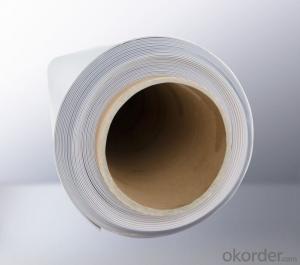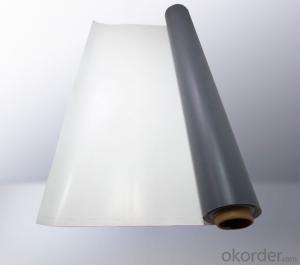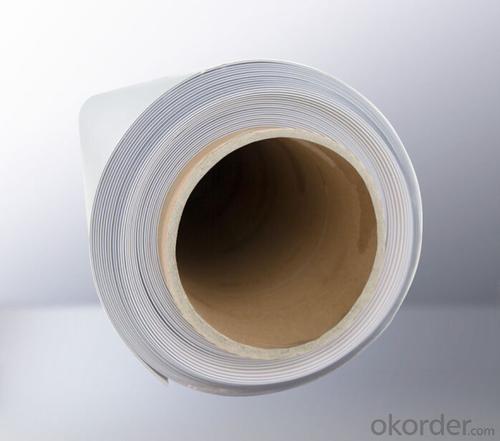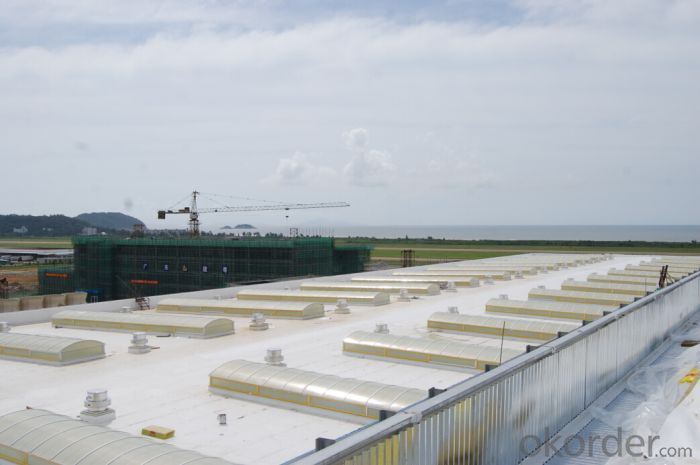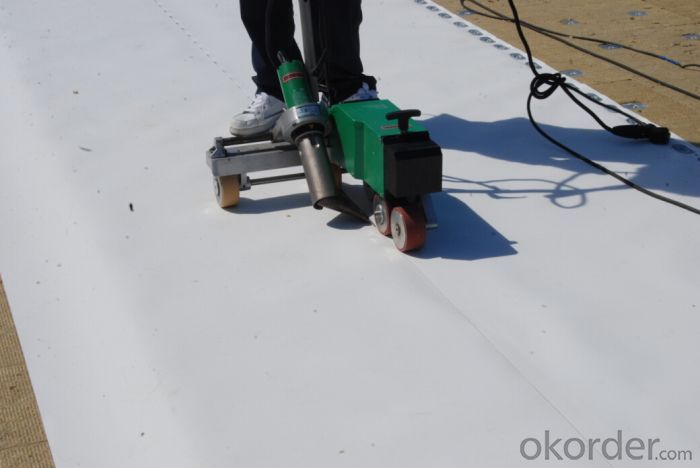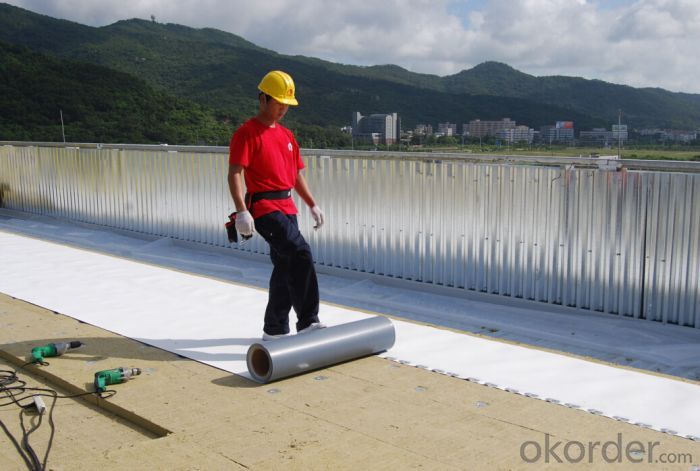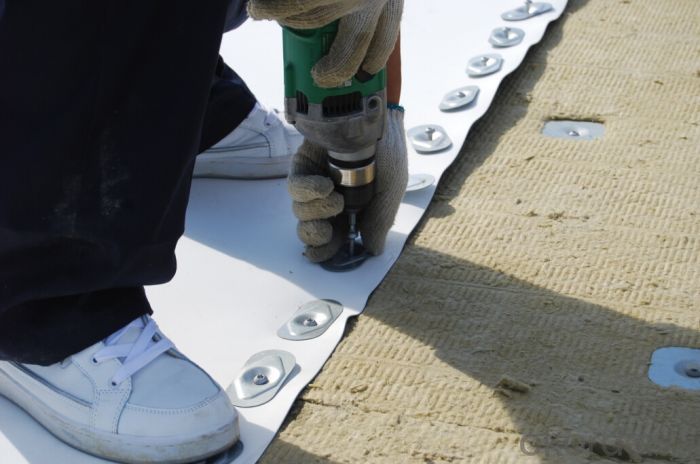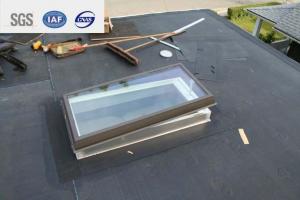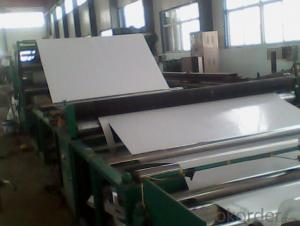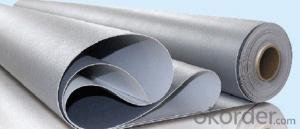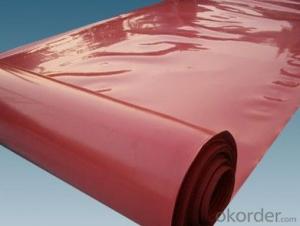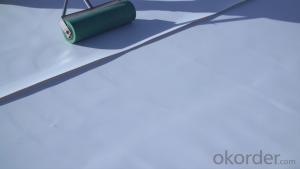Thermoplastic Polyolefin Waterproof Membrane (TPO Waterproof Membrane)
- Loading Port:
- Tianjin
- Payment Terms:
- TT or LC
- Min Order Qty:
- 5000 m²
- Supply Capability:
- 100000 m²/month
OKorder Service Pledge
OKorder Financial Service
You Might Also Like
TPO Waterproof Membrane
TPO is a waterproofing sheet, consisting of thermoplastic polyolefin, and compound resin materials as the base stock, reinforced with polyester mesh fabric.
Product Applications:
● Various roofing waterproof projects, such as industrial and civil buildings,
● Mechanically attached waterproofing system.
Product Advantages:
1. Weather resistance and durability; Excellent weld ability;
2. No any crisp agents to prevent materials brittleness;
3. Intermediate enhanced polyester mesh fabric to have high tensile strength, fatigue resistance and penetrating resistance suitable for mechanically attached roofing systems;
4. Excellent the same high and low temperature resistance as rubber materials which can keep flexible at -50° C and keep mechanical strength in high temperature;
Main Product Features:
1.. Excellent chemical resistance to acids, bases, and restaurant exhaust emissions; Dimension stability;
2.. White-based light-color and smooth surface with high reflection, energy saving and anti-dust functions;
3. Use heat welding for the seam areas to form a reliable seamless waterproof layer.
Product Specifications:
1.Thickness: 1.2mm and 1.5mm
2.Width: 1m, 2m,2.4m etc
3.Length: 20m,25m or clients’requirement.
FAQ:
Q: Can I visit your company?
A: Yes, welcome to visit our enterprise.
Q: Can I do the third party testing before loading?
A: Yes, we could accept the third party testing.
Q: Which kind of payment in your company?
A: We could accept TT, LC at sight, etc.
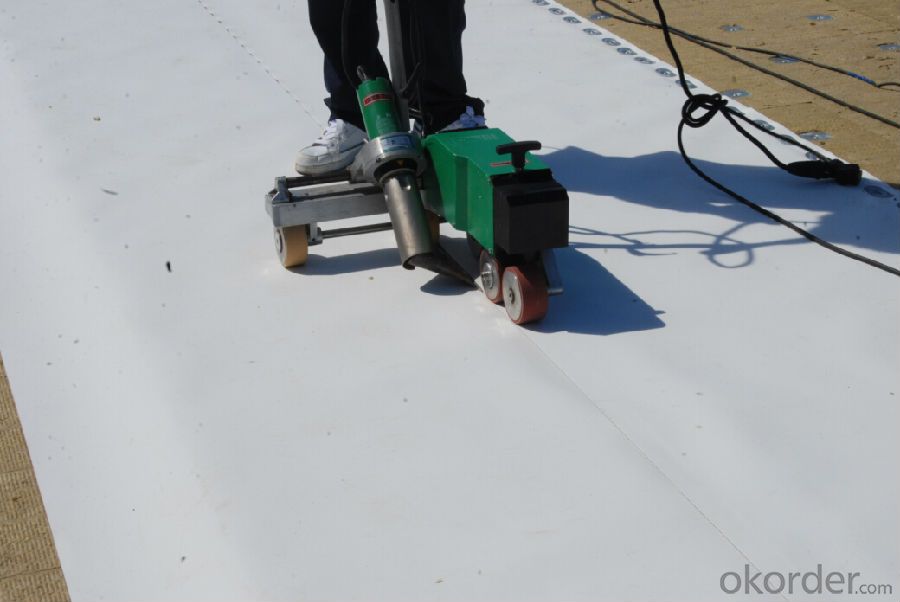
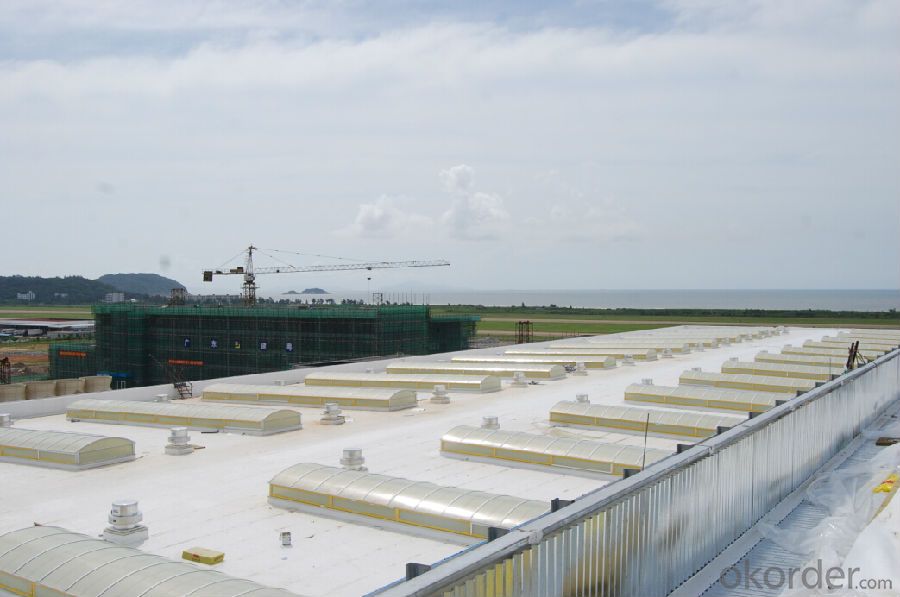

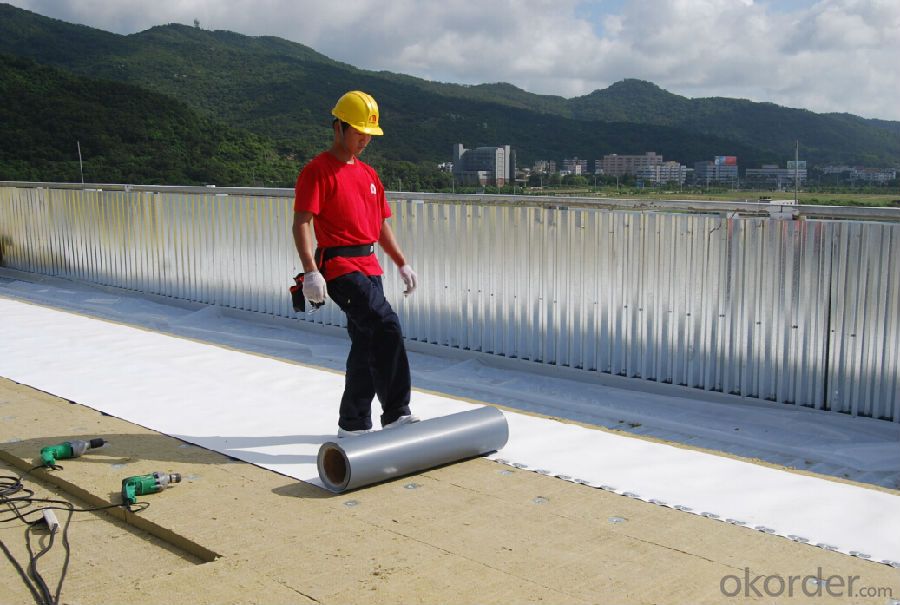
- Q: Can a waterproofing membrane prevent water leakage in basements?
- Yes, a waterproofing membrane can effectively prevent water leakage in basements. The membrane acts as a barrier, preventing water from seeping through the foundation walls or basement floors. It is designed to withstand hydrostatic pressure and provide a durable and long-lasting solution to keep basements dry and protected from water damage.
- Q: Are there any specific installation requirements for waterproofing membranes?
- Yes, there are specific installation requirements for waterproofing membranes. These requirements may vary depending on the type of membrane being used, but there are some general guidelines that apply to most installations. Firstly, it is important to properly prepare the surface that the membrane will be applied to. This may involve cleaning the surface, removing any loose debris or previous coatings, and ensuring the surface is smooth and free from any irregularities. This step is crucial as it allows for better adhesion between the membrane and the surface. Next, the membrane should be applied according to the manufacturer's instructions. This typically involves using a suitable adhesive or bonding agent to adhere the membrane to the surface. It is important to follow the recommended application rate and ensure that the membrane is applied evenly and without any air bubbles or wrinkles. In addition to proper application, it is also important to pay attention to the seams and joints of the membrane. These areas are particularly vulnerable to water penetration, so they should be carefully sealed using an appropriate sealant or tape. This ensures a watertight seal and prevents any water from seeping through the seams. Lastly, it is important to protect the installed membrane from any damage during and after installation. This may involve covering the membrane with a protective layer, such as a geotextile fabric or a layer of soil, to prevent punctures or tears. Additionally, any construction or landscaping work that may occur after the installation should be done with caution to avoid damaging the membrane. Overall, the specific installation requirements for waterproofing membranes will depend on the type of membrane being used and the specific conditions of the project. It is always recommended to consult the manufacturer's instructions and guidelines to ensure proper installation and long-lasting waterproofing performance.
- Q: Can a waterproofing membrane be applied on top of existing waterproofing systems?
- Indeed, it is possible to apply a waterproofing membrane onto existing waterproofing systems. In certain instances, it may be necessary to incorporate an extra layer of safeguard or improve the current waterproofing system. By applying a fresh waterproofing membrane on top, an additional barrier against water infiltration can be established, consequently prolonging the longevity of the waterproofing system. It is crucial to adequately prepare the existing surface prior to the application of the new membrane to ensure optimal adhesion and efficacy. Furthermore, seeking guidance from a professional or referring to the manufacturer's guidelines can offer specific recommendations regarding the compatibility and application process of the new waterproofing membrane.
- Q: Can a waterproofing membrane be applied on a vertical surface?
- Yes, a waterproofing membrane can be applied on a vertical surface. Waterproofing membranes are designed to create a barrier against water penetration, whether it is applied horizontally or vertically. They are commonly used on vertical surfaces such as walls, retaining walls, and foundations to prevent water damage and leakage.
- Q: Can a waterproofing membrane be used for a swimming pool liner installation?
- Yes, a waterproofing membrane can be used for a swimming pool liner installation. Waterproofing membranes are specifically designed to create a barrier against water penetration, making them an ideal choice for lining swimming pools. These membranes are typically made from durable materials such as PVC or EPDM, which are resistant to chemicals and UV rays. They can effectively prevent water from seeping through the pool structure and protect it from damage caused by moisture. Additionally, waterproofing membranes are flexible and can be easily customized to fit any pool shape or size, providing a seamless and watertight installation.
- Q: Does a waterproofing membrane require any curing time?
- Yes, a waterproofing membrane typically requires a curing time. The curing time is necessary for the membrane to fully bond and form a strong, impermeable barrier. The specific curing time can vary depending on the type of membrane and the manufacturer's instructions. During the curing process, the membrane may need to be protected from foot traffic, water exposure, or other potential damage. It is important to follow the recommended curing time to ensure the membrane's effectiveness and longevity.
- Q: SBS modified asphalt waterproofing membrane and synthetic polymer membrane the same, not the same, what is the difference?
- fiber fabric or fiber felt For the carcass, powdery, granular, flake or film material for the cladding material made of curled sheet waterproof material. The use of the construction process is cold construction paving or hot melt paving.
- Q: Can a waterproofing membrane be used in kitchens?
- Yes, a waterproofing membrane can be used in kitchens. Waterproofing membranes are commonly used in areas prone to moisture, such as bathrooms and kitchens, to prevent water damage and leakage. They can be applied to various surfaces, including floors and walls, to create a waterproof barrier and protect against water infiltration. By using a waterproofing membrane in kitchens, one can ensure the longevity and durability of the space while preventing potential water-related issues.
- Q: Can a waterproofing membrane be installed by a homeowner or is professional installation required?
- Professional installation is typically recommended for waterproofing membrane installation. This is because it involves complex techniques and specialized equipment that homeowners may not have. Additionally, professionals are trained to assess and address specific waterproofing needs, ensuring a more reliable and effective installation.
- Q: Can a waterproofing membrane be installed under tile or other flooring materials?
- Yes, a waterproofing membrane can be installed under tile or other flooring materials to protect against moisture and water damage.
Send your message to us
Thermoplastic Polyolefin Waterproof Membrane (TPO Waterproof Membrane)
- Loading Port:
- Tianjin
- Payment Terms:
- TT or LC
- Min Order Qty:
- 5000 m²
- Supply Capability:
- 100000 m²/month
OKorder Service Pledge
OKorder Financial Service
Similar products
Hot products
Hot Searches
Related keywords
